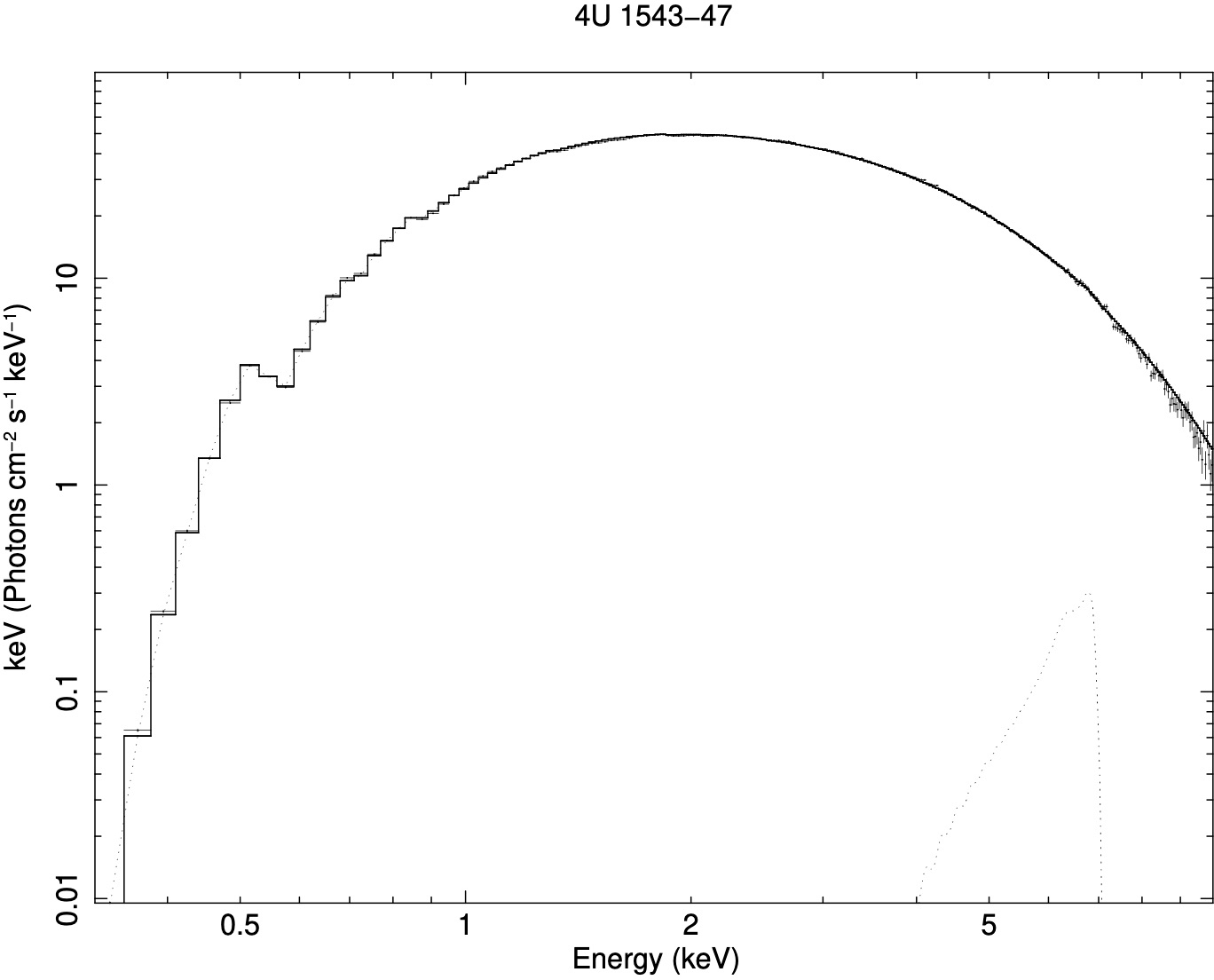NICER / ISS Science Nugget
for June 24, 2021
NICER Observes the Brightest Black Hole Transient in Over a Decade
The recurrently active binary system 4U 1543-47 harbors a roughly 10 solar-mass black hole with a close stellar companion. This system lies within the Milky Way, several thousand light-years from Earth. After nearly 19 years of quiescence, this X-ray binary began its latest outburst observed midday on 2021 June 11. 4U 1543-47 brightened at an unprecedented rate, rising to more than nine times the intensity of the Crab Nebula (itself one of the brightest objects in the X-ray sky) in just 2.5 days! This makes 4U 1543-47 the brightest transient object observed by NICER to date. In fact, it is so bright that to prevent data losses due to telemetry saturation, NICER temporarily deactivated 86% of its detector modules during the peak.
Historically, 4U 1543-47 has undergone outbursts once every 10 years or so. This latest outburst, which was significantly later than expected, is more than two times brighter than the previous one in June 2002. The figure on the left below shows the evolving outburst light curve as monitored by NICER. Each data point on the curve has an associated energy spectrum typically consisting of several million X-ray counts. The spectrum near the outburst peak is shown in the figure on the right.
By modeling the X-ray spectrum, we find that the X-ray flux is dominated by thermal blackbody-like emission. This is produced by the disk of accreting gas that is very gradually siphoning matter from the companion star onto the black hole. The disk is thin in profile, like a dinner-plate with a small hole in the center, extending from the innermost stable circular orbit - a mere ~50 km from the black-hole singularity - out to a distance of several million km. At peak brightness, the disk is emitting nearly a million times the total luminosity of the Sun, with the vast majority of that light coming from within its inner 1000 km. The temperature of the gas in the accretion disk increases at smaller radii, and reaches a peak temperature of 15 million Kelvin.
NICER's observations were reported in Astronomer's Telegram #14725. In addition to its own scientific value, NICER's regular monitoring of 4U 1543-37 has been key to ensuring instrument safety for X-ray detectors aboard other space observatories, such as NASA's Chandra and India's ASTROSAT.


Figure: Left: NICER light curve showing the brilliant rise of 4U 1543-47's outburst. Right: A 500-second exposure, 10-million-count spectrum of 4U 1543-47 near peak outburst brightness. The emission is very well described by a thermal accretion disk model along with a faint ionized-iron fluorescence line (detected at 6.7 keV photon energy, with equivalent width of ~40 eV). Points with error bars are the measured spectrum; dotted curves show the disk and iron-line components of the emission model; the solid histogram is the best-fit total data model.
<< Previous
Main Index